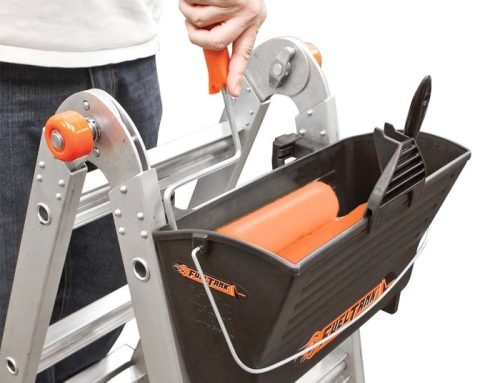Firefighters use ladders on a regular basis to rescue people from buildings, as well as to rescue people from situations where they are below ground level – the aerial ladder mounted to most fire engines can be lowered below ground level in situations where someone has become trapped in a hole, down a river bank or even down a cliff. They also use standalone ground ladders to reach people in buildings where the fire engine cannot reach with the mounted ladder.
When setting up a ground ladder for a rescue, firefighters first place the ladder next to the window, or aperture, they're aiming for in order to gauge how many rungs need to be extended to reach just under the windowsill. Setting the ladder up beside the window also stops the person waiting to be rescued from grabbing the ladder before it is ready, as this could cause injury to the people on the ground. The ladder should rest just under the windowsill, so that it does not get in the way of the firefighter who is enacting the rescue – stiles extending past the window line could cause clothing to snag, leading to overbalancing and the possibility of falling. This advice goes against much of the standard ladder safety guidelines, but time is of the essence when rescuing someone from a fire.
Firefighters are trained to use ladders in ways that would be considered unsafe in any other context. The general best practice is to maintain three points of contact with the ladder at all times (both feet and one hand), however, firefighters are trained to leg-lock by placing one leg over the rung and wrapping it around to create a stable base. They then have both hands free to break a window or help someone escape. The fireman's lift carry style, which involves hanging the rescued person over the shoulder, allows both hands to be free to safely descend the ladder.
When a person is injured and cannot be carried safely over the shoulder, firefighters work together to cradle the injured party and take them safely down the ladder, which may involve one officer entering the building to pass the victim out to their colleague on the ladder. It is preferable to use the aerial ladder with the bucket for these rescues, as this method allows the injured party to be rescued with plenty of space for them to be laid safely into the bucket, minimising carrying and the associated risks to both parties.
In cases where someone needs to be rescued from depth, rather than from height, ladders are the best way to enact this. A standalone ladder can be lowered to the victim, who may be able to climb out by themselves if they are not injured. If an injury has been sustained, one or more officers may climb down to the person and aid them in climbing the ladder, even carrying them out if they are badly hurt. Firefighters need to be able to climb and descend a ladder carrying the weight of a person and this requires a high level of fitness and regular training in these skills.
The physical fitness levels required to be a firefighter are high, because they are working in dangerous situations where they will need to lift and carry people, potentially several people in a single incident. One of the most impressive feats of firefighter fitness we have ever seen is this officer performing an air walk while hanging from the end of a ladder at what looks like a considerable height. This is not for the faint hearted and definitely not one to try at home!






Leave A Comment
You must be logged in to post a comment.